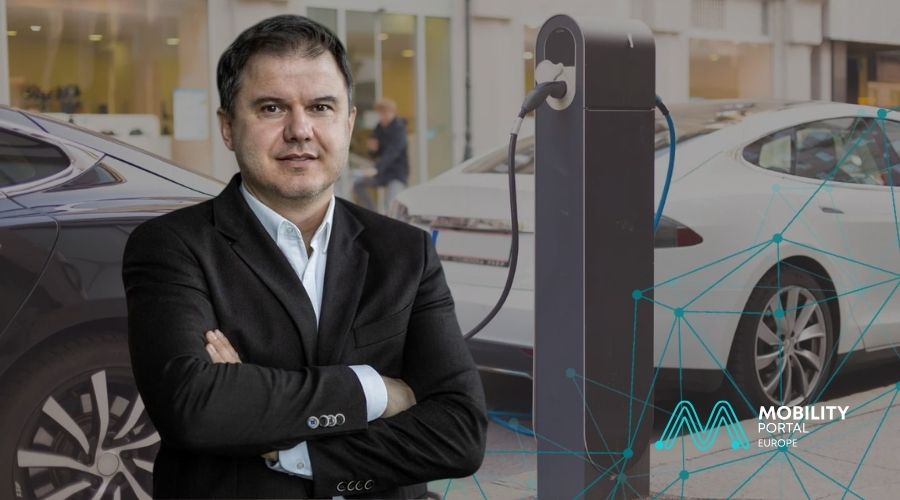Public charging infrastructure in Slovakia has reached 2,818 points spread across 1,117 locations, according to data from the Slovak Electric Vehicle Association (SEVA).
Although this figure is still far from the standards of the most advanced countries, it helps to explain, in part, the 53% increase in electric vehicle sales in 2024, positioning Slovakia among the countries that have experienced the most significant growth in Europe.
One of the pillars of this transformation is the Recovery and Resilience Plan, funded by the European Union, which promotes the installation of chargers in urban areas and strategic corridors.
“The plan is a vital tool—although still underutilised—to accelerate the transition to electromobility in Slovakia,” says Patrik Krizansky, SEVA’s director, in an interview with Mobility Portal Europe.
In this context, he highlights that both alternatin (AC) and direct current (DC) chargers are already being installed with European co-financing.
Special attention is being given to Trans-European Transport Network (TEN-T) corridors, key for connecting European countries.
“We are in the final phase of the tender to select three dealers who will be responsible for building and operating 251 ultra-fast charging points at 35 centres along highways,” he states.
The goal is for these points to be operational by mid-2026.
Krizansky clarifies that SEVA has worked closely with the Ministry of Economy over the past two years, providing technical assistance to ensure service quality standards.
He also assures that this backbone network will be essential to enable electric logistics, long-distance travel, and build confidence in both private and commercial fleets.
Ultra-Fast Charging: The Key to Boosting Fleets and E-Trucks
The Recovery and Resilience Plan includes the installation of chargers up to 400 kilowatts, capable of servicing both passenger cars and heavy vehicles.
According to Krizansky, this will have a decisive impact on logistics and tourism within the country and in the region.
“Ultra-fast chargers will be distributed evenly, enabling the efficient use of electric vans and trucks, reducing the downtime associated with charging,” he states.
Moreover, he believes that this network will help reduce range anxiety among users, making electric mobility more viable and attractive for long-distance journeys.
The potential to boost electric tourism is another relevant factor: with a robust national network, Slovakia could position itself as a destination suitable for travellers in electric vehicles, an aspect still limited by the scarcity of charging points outside urban areas.
Infrastructure and Sales Growth
Slovakia recorded a 53% increase in electric vehicle sales in 2024, with more than 15,400 units in circulation.
SEVA identifies two key factors to explain this acceleration.
On one hand, greater access to a wider range of models, particularly in more affordable price brackets. On the other hand, a charging network that, although still under development, is beginning to meet user needs.
This progress, they acknowledge, is also due to the low starting point in the comparison: “We were among the last in Europe, so any absolute increase translates into significant year-on-year growth.”
It is worth noting that the European Alternative Fuels Observatory (EAFO) reports the addition of 1,526 fully electric vehicles (BEVs) in Slovakia during the first half of 2025. This is alongside 1,515 plug-in hybrid units registered in the same period.
BEVs thus achieved a market share of 4.2%, the highest recorded so far by EAFO. This figure reverses the downward trend observed in 2024, when the annual average stood at 2.34%.
What Are the Next Challenges in Slovakia?
The country remains behind other European nations in terms of charger density per capita and per kilometre of road.
Additionally, there are regulatory barriers and administrative challenges that delay the activation of new charging points.
Nevertheless, the collaborative approach between the public sector and associations such as SEVA seems to have marked a turning point.
“Owning an electric car in Slovakia is now considerably more convenient for everyday use,” Krizansky says.
To sustain growth, the focus is on ensuring network interoperability, expanding incentives for purchasing electric vehicles, and securing a clear and agile regulatory framework to enable new investments.
DISCOVER MOBILITY PORTAL DATA
Discover Mobility Portal Data, a new exclusive market intelligence platform offering reliable data and key reports to support smart decision-making across the automotive sector — covering both combustion and electric vehicles, as well as charging infrastructure.
Research, trend analysis, and neatly organised statistics presented with clarity and precision, alongside up-to-date insights — all just one click away.
With Mobility Portal Data, good decisions are on the horizon.
READ MORE
-
6 days left: How to make EV charging stations reliable, visible and durable?
On 5 November, Data Modul will host a web seminar on HMI solutions for EV charging stations — a must-attend event for manufacturers seeking to innovate and optimise their products.
-
Rightcharge secures £1.6M to boost EV charging payments for Europe’s fleets
Public charging remains fragmented and reimbursing employees for home charging is often slow and error-prone. However, fleets using Rightcharge can reduce charging costs by up to 90%.
-
Strong demand for France’s social EV leasing with 41,500 cars already leased
To date, over 41,500 vehicles have been leased, including more than 11,360 by beneficiaries who live or work in areas where air quality is a concern.











